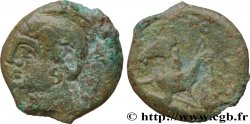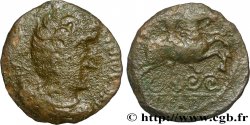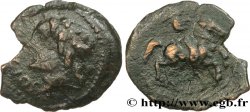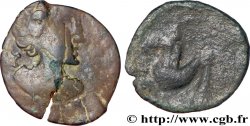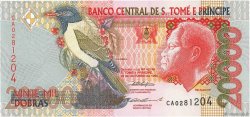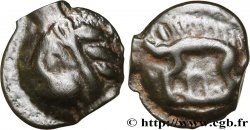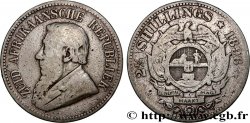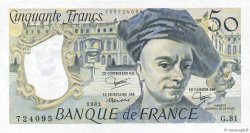bga_336584 - GALLIA - ARVERNI (Area of Clermont-Ferrand) Drachme au sanglier, tête à gauche
Not available.
Item sold on our e-shop (2024)
Price : 220.00 €
Item sold on our e-shop (2024)
Price : 220.00 €
Type : Drachme au sanglier, tête à gauche
Date: c. 120-60 AC.
Metal : silver
Diameter : 14 mm
Orientation dies : 7 h.
Weight : 2,32 g.
Rarity : R3
Coments on the condition:
Frappe molle sur un flan irrégulier. Patine sombre sur des reliefs assez émoussés mais identifiables
Catalogue references :
Obverse
Obverse legend : ANÉPIGRAPHE.
Obverse description : Tête chevelue à gauche, grènetis.
Reverse
Reverse legend : ANÉPIGRAPHE.
Reverse description : Cheval à gauche, un sanglier entre les jambes.
Commentary
Bien que très usée et mal frappée, cette monnaie peut être rapprochée de la série”au sanglier” et plus particulièrement au type II avec la tête à gauche. Cette variante manque au Nouvel Atlas tandis que deux exemplaires sont catalogués dans le CMG 1 (n° 164 et 165) ; le premier provient de la collection de Saulcy et le second a été trouvé dans les fossés d’Alise-Sainte-Reine pendant les fouilles de Napoléon III entre 1862 et 1865.
Malheureusement, le n° 165 est très décentré et il semble qu’il corresponde au DT. 3536 (conservé au Musée Bargoin et pourtant repris par S. Nieto en 2003) qui appartient au type I avec la tête à droite.
Notre monnaie serait donc le second exemplaire connu après le BN 3803, avec la tête à gauche.
Although very worn and poorly struck, this coin can be compared to the “wild boar” series and more particularly to type II with the head on the left. This variant is missing from the New Atlas while two examples are catalogued in CMG 1 (nos. 164 and 165); the first comes from the Saulcy collection and the second was found in the ditches of Alise-Sainte-Reine during the excavations of Napoleon III between 1862 and 1865. Unfortunately, no. 165 is very off-center and it seems that it corresponds to DT. 3536 (kept at the Bargoin Museum and yet taken up by S. Nieto in 2003) which belongs to type I with the head on the right. Our coin would therefore be the second known example after BN 3803, with the head on the left
Malheureusement, le n° 165 est très décentré et il semble qu’il corresponde au DT. 3536 (conservé au Musée Bargoin et pourtant repris par S. Nieto en 2003) qui appartient au type I avec la tête à droite.
Notre monnaie serait donc le second exemplaire connu après le BN 3803, avec la tête à gauche.
Although very worn and poorly struck, this coin can be compared to the “wild boar” series and more particularly to type II with the head on the left. This variant is missing from the New Atlas while two examples are catalogued in CMG 1 (nos. 164 and 165); the first comes from the Saulcy collection and the second was found in the ditches of Alise-Sainte-Reine during the excavations of Napoleon III between 1862 and 1865. Unfortunately, no. 165 is very off-center and it seems that it corresponds to DT. 3536 (kept at the Bargoin Museum and yet taken up by S. Nieto in 2003) which belongs to type I with the head on the right. Our coin would therefore be the second known example after BN 3803, with the head on the left







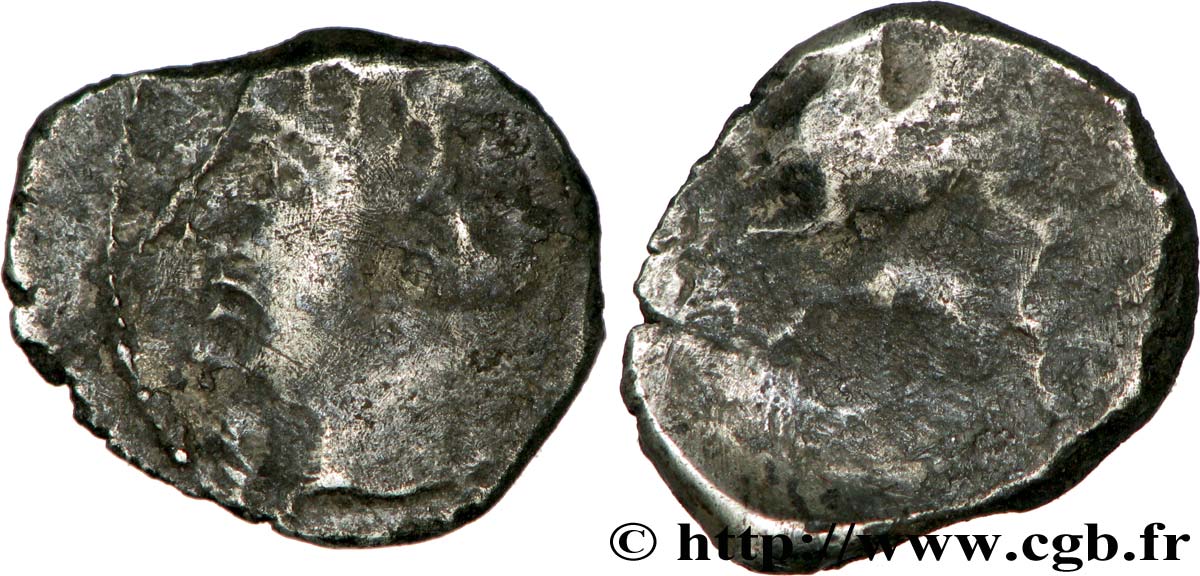
 Report a mistake
Report a mistake Print the page
Print the page Share my selection
Share my selection Ask a question
Ask a question Consign / sell
Consign / sell
 Full data
Full data